REVIEW – I have been considering getting a high-tech weather station for years now but never had the time/energy to do the product research and make it happen. As a bit of background, I have a degree in atmospheric science and am quite the data-nerd. So when Julie offered up the AcuRite ATLAS weather station, I quickly volunteered to check it out and see if it lives up to my hopes and dreams of collecting ultra-local meteorological data at our home.
What is it?
The ATLAS weather station is engineered to collect meteorological data in near real-time and wirelessly transmit it to you in a variety of ways. The ATLAS measures temperature, humidity, wind speed, wind direction, rainfall, UV index, and light intensity. The system transmits this data to either an optional HD touchscreen in your home or uploads it via the optional access point to the internet/cloud, making it viewable on your computer or smart device anywhere you happen to be.
Design and features
The AcuRite ATLAS is a compact, relatively well-made weather station that collects what I would consider pretty standard meteorological data. Its housing is made from a hard plastic designed to (obviously) withstand the outdoors.
- ATLAS Weather Station
- Wall/post mounting bracket
- High Definition Touchscreen Display (optional $99.99)
- AcuRite Access Point (optional $99.99)
- Lightning Detector (optional $39.99)
Specifications:
| Temperature Range | -40 to 158° F -40 to 70° C |
|---|---|
| Temperature Accuracy | +/- 1° F |
| Humidity Range | 1% – 99% RH |
| Humidity Accuracy | +/- 2% RH |
| Wind Speed | 0 – 160 mph; 0 – 257 km/h |
| Wind Direction | 360° |
| Wind Direction Accuracy | +/- 3° |
| Rain | .01″ intervals (0.25 mm) |
| Rain Accuracy | +/- 5% |
| UV Index | 0 – 15 index |
| UV Accuracy | +/- 1 |
| Light Intensity | to 120,000 Lumens |
| Data Reporting | Temperature: 30 seconds Humidity: 30 seconds Wind Speed: 10 seconds Wind Direction: 30 seconds Rainfall: 30 seconds UV Index: 30 seconds Light Intensity: 30 seconds |
| Wireless Range | 330 feet (100 meters) depending on home construction materials |
| Wireless Signal | 433 MHz |
| Power | 4 AA alkaline or lithium batteries |
The ATLAS weather station is powered by four (4) AA batteries (not included). I thought it was odd AcuRite recommends standard alkaline or lithium batteries versus rechargeable ones. We do our best to only use rechargeables and don’t have any disposable batteries in the house. So I threw caution to the wind and used what we had… Thus far the weather station is no worse for the wear. Hopefully, they recommend non-rechargeable batteries only due to poor performance/endurance in the extreme temperatures. That said, I’ll most likely swap them out when I get the chance.
The battery compartment also has a port for the optional Lightning Detector module, pictured here on the left.
Before mounting the ATLAS weather station, foam surrounding the rain gauge must be removed allowing the plastic rocker to move freely. You definitely have to be careful to not damage or pinch the thin wires or small plastic connectors. The ATLAS is weather hardened but probably would not survive much, if any sort, of fall.
The plastic mount can be installed vertically or horizontally. An extension piece may be necessary to raise the ATLAS high enough away from whatever the mount is attached to. I used a 1 inch schedule 40 PVC pipe I had laying around the garage which worked surprisingly well. I may buy a longer piece to elevate the ALTAS even further above our roof but that may turn out to be unnecessary.
To accurately collect data, the ATLAS has to be level. Here you can see the integrated leveling bubble centered as prescribed (actually the easiest part of the install).
Once installed, you can barely tell the ATLAS is there collecting weather data unless you know where to look.
In addition to the AA batteries…when the sun is out, the ATLAS is also powered by three small solar panels built into the housing of the station. The solar cells measure about an inch and a half squared and there is one on the front and each side of the housing.
Here you can see the rain gauge intake and UV/light intensity sensor next to the leveling bubble.
The wind direction and speed sensors are mounted top, rear of the ATLAS. Both sensors move freely in the wind. As long as you face the ALTAS due South, you do not have to tweak any of the settings to receive accurate wind direction.
Optional Accessories:
The biggest and really only issue I have with the AcuRite weather station is that you have to also purchase one of their optional accessories to view/access your data (though they do sell package deals on Amazon).
High Definition Touchscreen Display
The high definition wireless touchscreen is clear and bright, though a bit top-heavy (I ultimately mounted it in my office). Displaying all the data in a well thought out layout. Like the smartphone app, the screen also enables you to dig deeper into the data for more thorough analysis. The system’s wireless range is approximately 300 feet depending on what the signal has to penetrate. The display has a built-in antenna that can be raised if need be. There is also a standard SD card slot if you want to capture the data for later review.
AcuRite Access Point
The AcuRite Access Point plugs into the ethernet port of your router and uploads the ATLAS met data to the myacurite.com website for viewing on your computer, tablet, and/or smartphone. The access point is dual powered via a microUSB plugged power source or three AA batteries as a temporary backup in case your power goes out. Though at that point, my guess is your internet modem and router would be without power limiting/killing your connectivity anyhow.
The AcuRite smartphone app does a pretty good job of displaying all the weather data collected by the ATLAS. You’re able to flip thru various data specific screens.
Or dive deeper into any one of the individual datasets to get a closer look as the weather changes over time. The app also enables you to download the data from the AcuRite server and set alerts for extreme conditions.
It is easy to tell at a glance the ambient conditions at your home or wherever you’ve installed the ALTAS. We live pretty far out in the sticks, so when I’m downtown or on travel, it’s great being able to check the app to see how (bad) the weather is at our place.
What I like
- Provides real-time local weather data
- Excellent list of sensors/data collected
- Well made
- Easy to setup
- Solar and battery powered
What needs to be improved
- Should include remote access in the box (vs as optional accessories)
Final thoughts
I really like the ATLAS weather station, it definitely meets my atmospheric scientist data-nerd needs. AcuRite has done an excellent job creating a solid array of sensors in a compact, easy to install/setup design. The HD screen and smartphone app also do a solid job of displaying the meteorological data in an easy to read and understandable manner. That said, seeing the data on either, requires at least $100 more be invested to truly make the system usable. Though the ATLAS with all the accessories (screen, access point, and lightening module) shown here is currently available at Amazon for $261 as a package deal.
Price: ATLAS $149.99 / HD Touchscreen Display (optional $99.99) / Access Point (optional $99.99)
Where to buy: AcuRite.com or Amazon.com
Source: The sample of this product was provided by AcuRite.

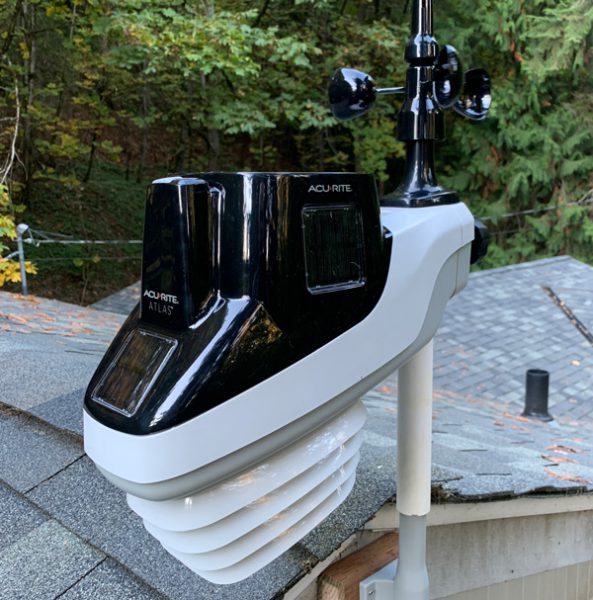
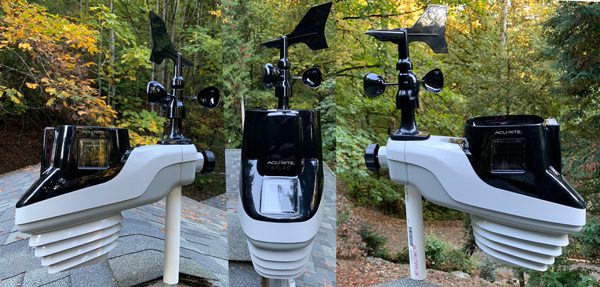
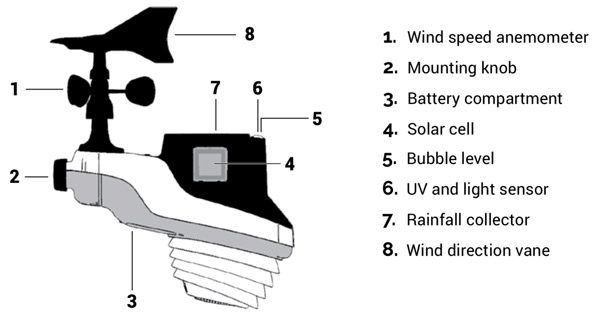
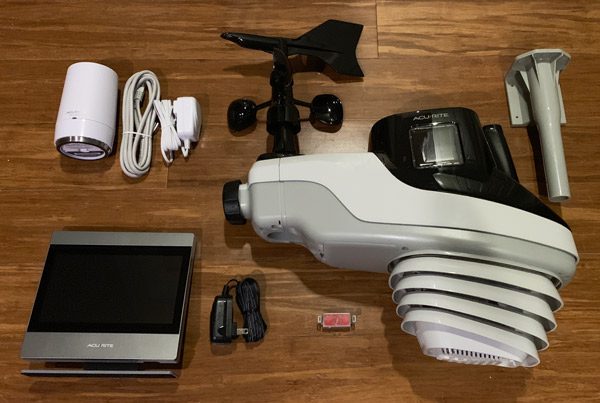
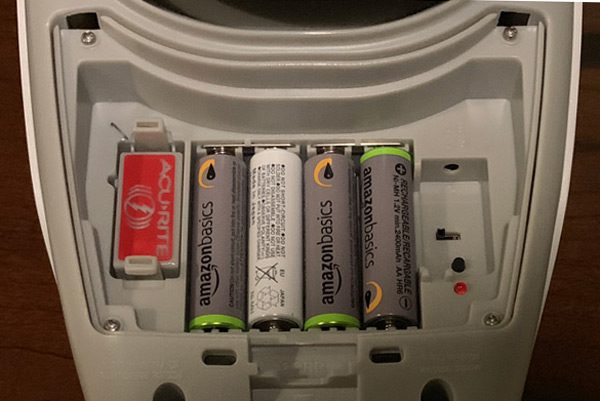
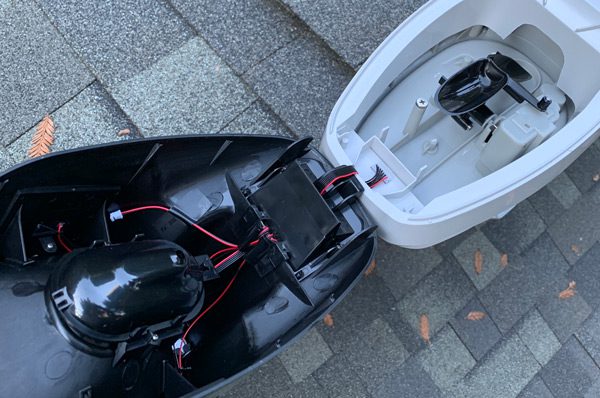
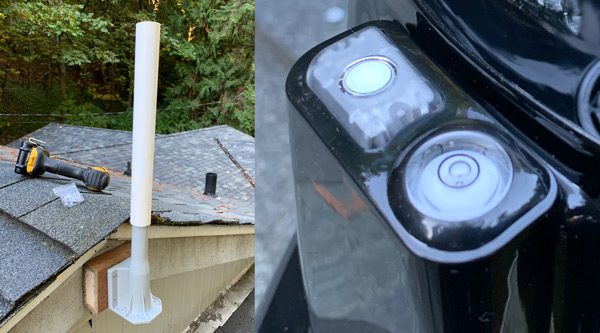

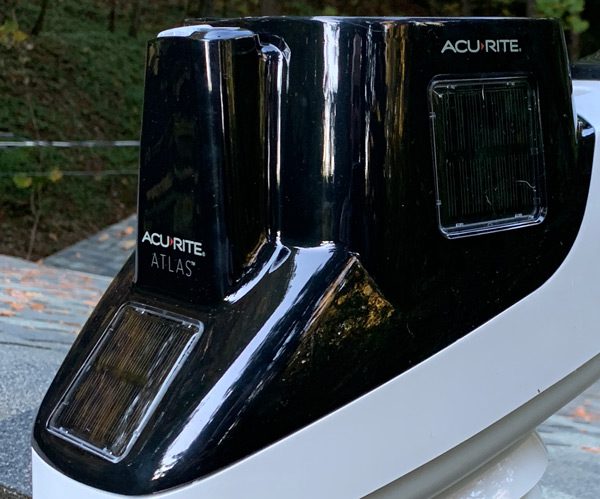
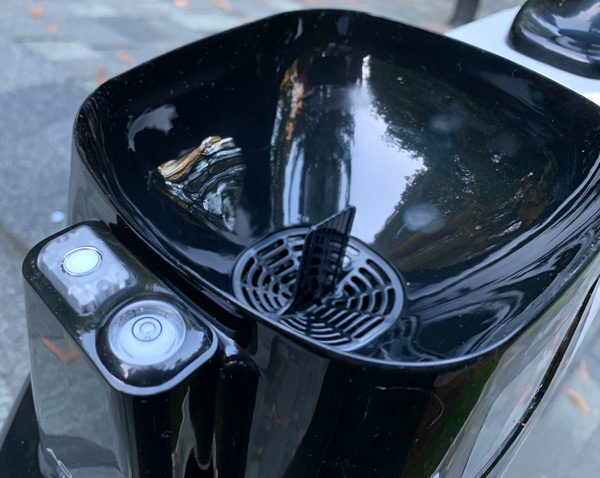
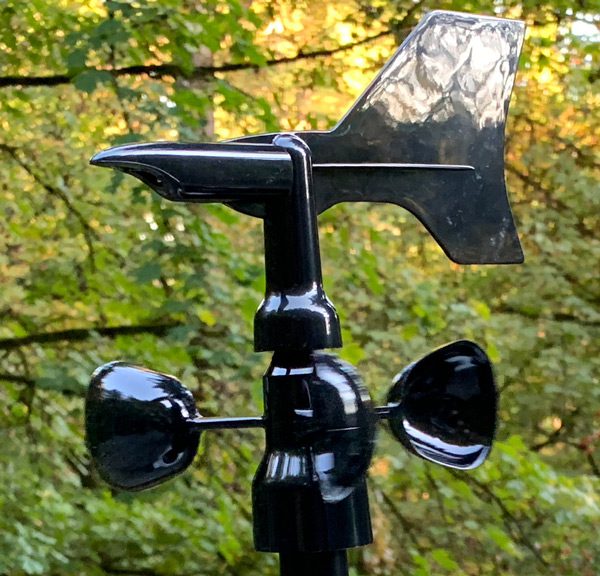
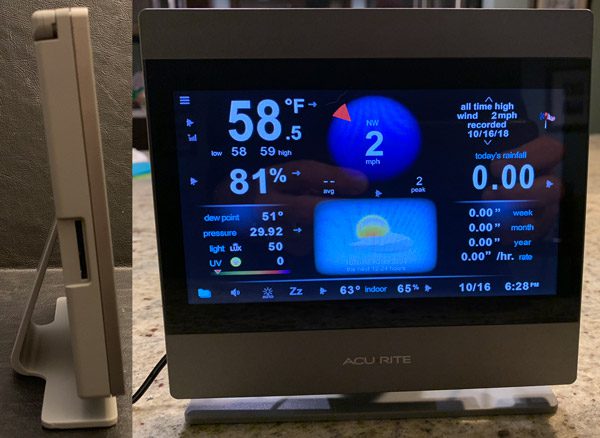
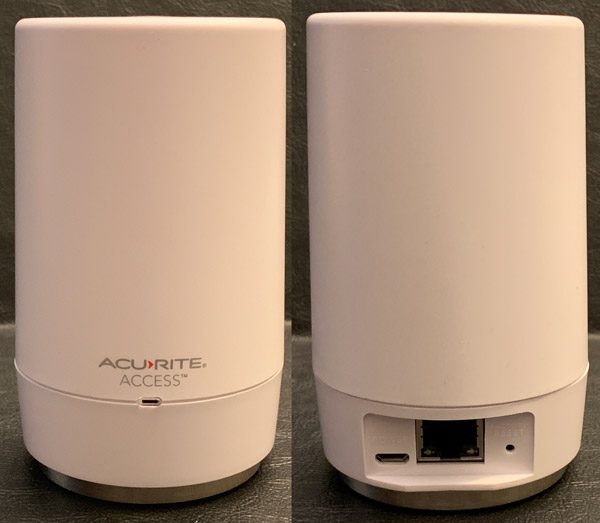
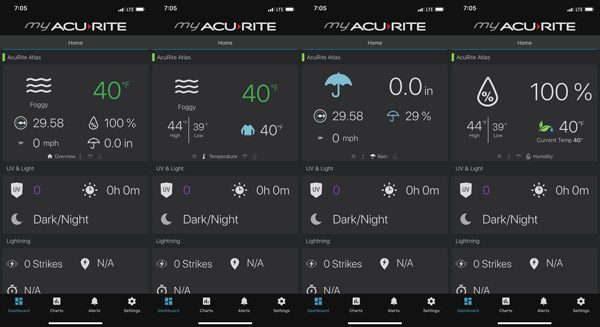
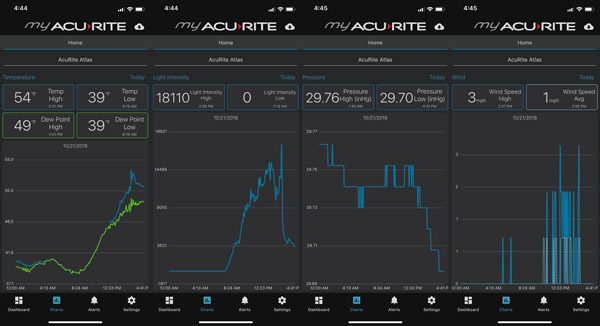


Gadgeteer Comment Policy - Please read before commenting
The Atlas is positioned way too close to you roof. Many of your metrics will be affected by this (temp, wind speed/possibly direction, rain and even humidity).
Absolutely too close! You need to get it up at least 10 feet above the roof
You are probably right with the 10’ but you will have difficulty attempting to level rain gauge that high up above roof. You got to look at leveling gauge to level properly and I see no way getting that high up on ladder to view.
Dave, you should scrap the cheap plastic mount that comes with the Atlas and get yourself a proper mast and mount. Then, purchase the optional wind extender to get the anemometer to the proper height above the building. You’ll be able to get the sensor above the building and to a height where you can still level it. You’ll also get better wind speed/direction readings with the anemometer up a bit higher.
On a personal note, I am kind of cheap so I used a modified roof rake handle screwed down to a deck rail post as a mast. Works like a champ! The Atlas sensor is the proper height above my deck. With the wind extender, the anemometer/vane sits 20 feet above the Atlas sensor on a 1-inch improvised mast (sans guywires).
You might also want to consider the remote battery pack so you don’t have to get up on the roof to change the batteries. Both the wind extender and the remote battery pack come with 30 foot extension cables and can be mounted tool-free except for maybe a screwdriver to mount the battery pack.
The total cost for the two above mentioned accessories is about $50 and can be purchased from Acurite. IMO, well worth it.
Interesting… I have the Davis Instruments VantageVue. It’s considerably more expensive but has one important difference; the sampling rate. The Accurite has a sample rate of 10 secs while the Davis Instruments Vantage Vue is 2.5 secs. This equates to missing accurate wind gust measurements with the Accurite (vs the Vantage Vue’s 2.5 secs). Otherwise, I’m generally disappointed in all the ‘add-on’ of either of these products.
I have both stations mounted about 20 feet from each other above my roof and the update timing doesnt matter. I contacted acurite and it updates every 10 secs the highest wind speed in that 10 sec period. What I have noticed is that will cause the average wind speed to be much higher because it doesnt take into account the lulls of wind. I am a little disapointed in the temp readings. In bright sun it does run about 2-4 degrees higher then my Davis
Great review Dave. I’ve always wanted one of these or similar, but there are about 6 people with like devices in a 2 mile radius around my house, per Weather Underground ! So I read their readings.
Dave,
Any specifics about functionality to export data, either to the Amateur Radio APRS network, or to sites such as Weather Underground?
Thanks for the review!
Everything tends to recommend non-rechargeables. Rechargeables have a slightly lower power density, and some of them will cut power out at a slightly different point when discharged.
But in nearly all cases it doesn’t actually matter – It’s just that to get the battery life they mention in the documentation they tested with non-rechargeable, so that’s what they recommend.
One thing that I noted that looks good about this is the humidity range. Some of the cheap weather stations do not measure humidity if it is less than 10%. This one as well as the Davis suystem that I own measures at 1% or better. We live in Las Vegas where the humidity is often less than 10% so this would be important to us.
How well will it work in the winter when it is snowing or freezing rain?
I have about 10 of these in storage at the office. We (epitent.co.ug) wanted to do some data collection experiments and bought the wrong equipment. Have you any idea the chaos (and hilarity) that ensues when you have two or more weather stations within 10 metres of the same access point? We learned the hard (expensive) way that weather stations cannot have extra sensors cobbled on or that while one reader can obtain data from up to three stations, you have absolutely no idea which ones you are reading from.
We had to buy tiny temp and humidity readers that were self contained, USB only and using some obscure batteries.
Very good writeup about the weather station.
I have the older model and I have tried different type batteries and it all come down to the Lithium as it seems to last longer and is not as temp sensitive as the alkaline and rechargeable batteries are. I had battery problems and called
Accurite and was told that only a few brands are tested and they do not recommend any other as those tested. Something about the internal structure such as voltage and current. Rechargeable are not a good sub as they are temp sensitive and back in Illinois when it is zero degrees and snow on the ground they will lose their charge.
My unit has three solar cells, but are only used to power the small fan to keep the ambient temperature consistent. They don’t power the unit although this new system may.
I have two of these Atlas stations.
In my humble opinion, there still some work ahead of improving this product. One of mine stopped working after the two months of operation. I had to have it sent in. I have no idea what they did to fix it as I did not include any information, but they did turn it around in one week.
The other one is constantly providing false lightning detections. There’s apparently, according to some reader comments in other various forums, indicates that there is interference generated by the solar powered fan internally in the unit. Also I never seem to see a UV index of more than 3. Here is south Florida, I would expect to see a 6 at this time of the year.
My other unit in Colorado is even worse and I am at 9000 feet where I should be seeing Levels as high as 9. I never get above a two or three.
So some more work is needed. But I do find everything else to be fairly accurate and easy to use.
And by all means use lithium batteries. They have a much greater capacity. Rechargeable batteries actually are only 1.2 V. Where standard carbon or alkaline/lithium give you 1.5 V
My worry about the voltages stated are that alkalines START at 1.5V and steadily drop down to 0,9V as they deplete. Ni-MH start a little above 1.2V and remain fairly consistently there until they get down to 1V as depleted. So alkalines do definitely not stay at 1.5V until depleted. I’m just wondering as Acurite warns against using rechargeable s, but if voltage consistency is the thing, then rechargeable s seem to make more sense to me.
What is the issue with the false lightning strikes. My Atlas that I just brought online a week ago gets over a hundred each day when the sun is out.
I have the accurite atlas with the accurite access. This access is a total loser. It loses it’s connection 2 to 3 times a day. The message on the email notifies you that it is not receiving data and says to replace the batteries and check the range. The access is less than 100 feet from the outside sensor and I changed the batteries. The batteries tested fine. The solution seems to be to disconnect the unit for a few seconds and reconnect. This becomes annoying real quick. Also, the data received by the access is not the same as is on the display unit.
Note: The unit is NOT solar powered. The solar panel is used for data collection only. I agree, the display is beautiful, but cheaply made and fades significantly after a few months of use. Junk.
Very disappointed as well, batteries last couple of months and that’s it.
Do you face the same issue? I am using Alkaline as suggested, I mean Duracell not Amazon/Ikea ones.
Support is also quite terrible… chat, never there, email… no answer.
Not happy.
If you are getting false lightning strikes call them and they’ll have you send in your Atlas to get the fix. Seems earlier versions had issues. The one I received a couple of weeks ago doesn’t have false positive lightning issues.
The solar panels are to detect UV and run the fan.
I got the Lithium batteries as we can get well over 100F and -30F temps. Put rechargeables in the Access. So far so good.
Anyone find a good APRS solution for the Atlas?
wunderground works with it too. But data in the table is skewed for me waiting on wunderground to fix the issue.
Over all it would be a nice weather station. However, they did a bad job when it comes to how it handles displaying the rainfall. Rather than resetting at midnight for the new day (like all the rest of the stuff does) the rainfall keeps counting. Then after rain is over, it will display rain in a rolling 48 hours, so if the new rain falling isn’t as fast as previous, you have a rain gauge that counts down while its raining. After all that, it switches to 7 days…so you always have some number on the display instead of zeros if its not rained. The rainfall rate is not working right either, its more or less just just past hour’s accumulation, rather than actual rainfall intensity. Lamest thing I ever seen…
Do you think this could be a defect with your particular unit? I’ve read a ton of reviews and haven’t seen this as a complaint. I’m really interested in this station, but if this is a normal issue, I’ll keep looking!
Why is the access data displayed on my phone so different than the display data?
Pressure, temp, etc.